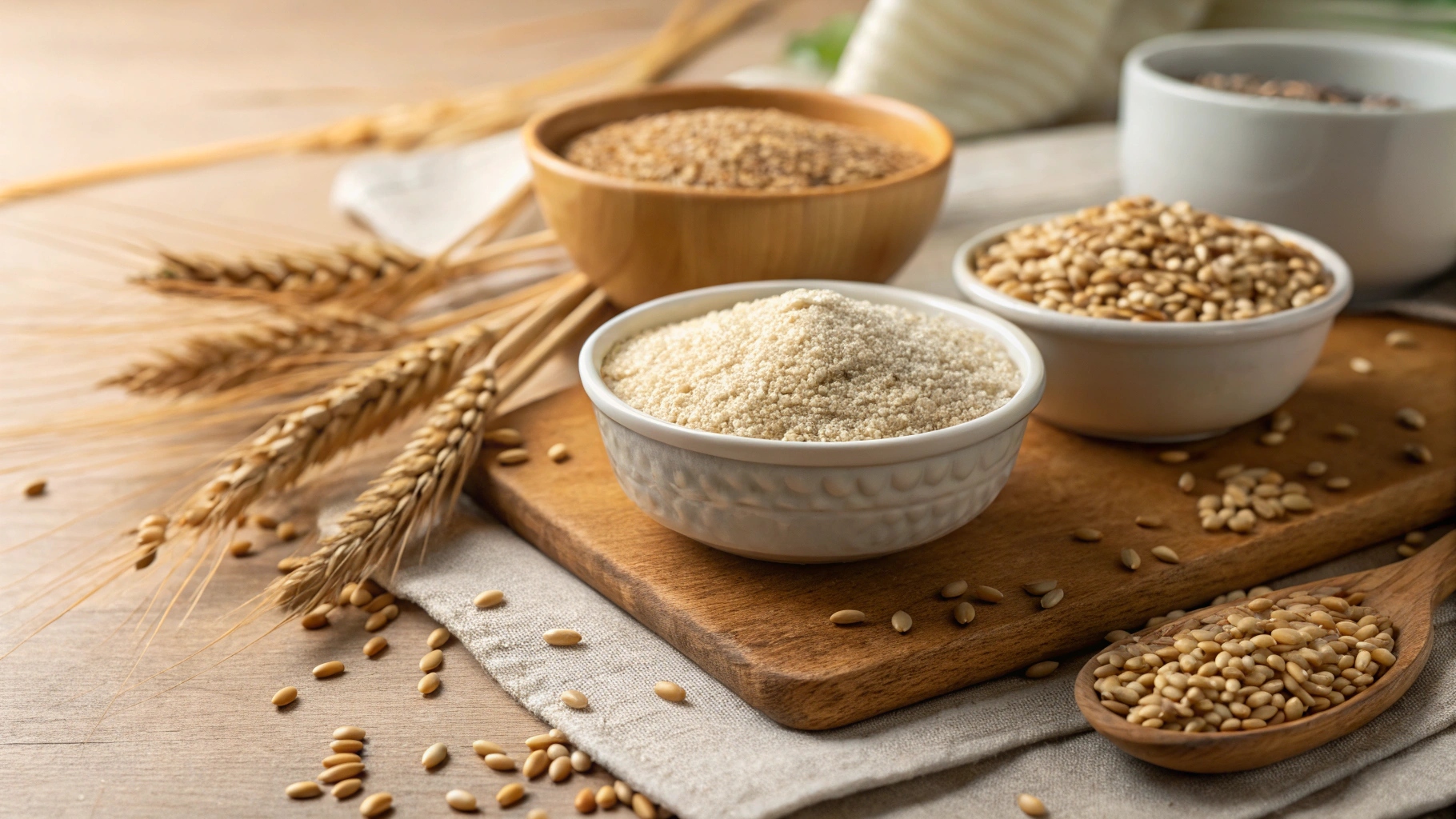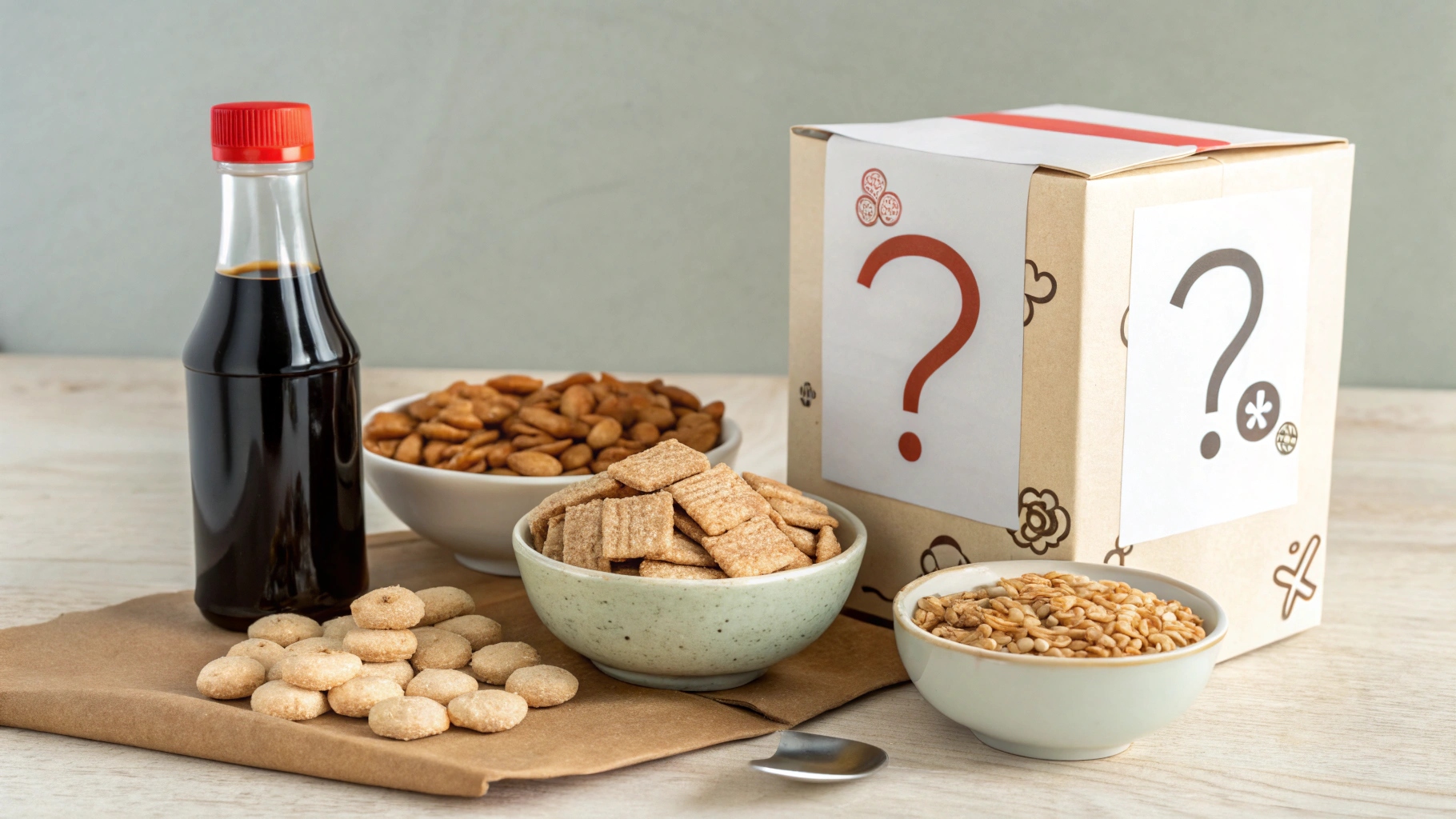What foods are high in gluten?

What Is Gluten?
What is the gluten that everyone seems to be talking about?
Gluten is a type of protein extracted from wheat, rye, and barley. It tends to make up around 70-80% of the protein in these cereals and does not dissolve in water. When added to water, it forms a gel-like structure, which is what gives dough the elastic properties that are so prized.
Types of Gluten
Gluten isn’t just one type of protein. So, what’s in gluten?
Gluten proteins can be divided into two main types—gliadins and glutenins. Gliadins are smaller proteins made up of a single chain of amino acids. Glutenins are bigger and more complex, consisting of multiple protein subunits. These proteins serve a specific storage function in plants. They help supply the grains with enough protein as they germinate and grow. Gliadins and glutenins have particular properties. Gliadins help with the cohesiveness of gluten, while glutenins are essential for elasticity and strength.
Barley and rye have similar proteins called hordeins and secalins, respectively. They tend to elicit similar reactions from people sensitive to gluten.

What foods are high in gluten?
Many people have gluten sensitivities or have celiac disease. Others may want to avoid gluten out of personal preference. Both require an understanding of what foods have gluten. We’ve assembled a pretty comprehensive list of foods that are high in gluten to help you make choices that suit your diet.
This list is not exhaustive, however. Gluten may also be added to other products. The best way to know whether a food has gluten is to check its ingredient label. Look out for wheat, barley, and rye, as well as their by-products, in the ingredient and allergen information. Maltose and malt products, seitan, which is made from vital wheat gluten, wheat germ oil, and baker's yeast may contain or be contaminated with gluten.
Some other everyday products may also be contaminated with gluten. These include vegetable proteins, modified food starches, colorings, hydrolyzed vegetable proteins, seasonings, dextrin and maltodextrin, and oat products. If you're avoiding gluten, it's best to look for gluten-free certified foods. If in doubt, it's better to be on the safe side and check with the manufacturer about potential gluten contamination.
Without further ado, let’s jump into the foods that contain gluten.
-Grains That Contain Gluten
Many grain cereals contain gluten. That's because gluten is a protein that is found in plant grains. The most significant sources of gluten include wheat, barley, and rye.
You may wonder whether other common cereals have gluten, too. Many cereals we consider to be different from wheat and barley are actually specific types of these two. Let’s have a look at common ancient or health-food cereals.
- Bulgur. This widely used ingredient is simply a processed form of raw wheat. It is typically made from durum wheat. It has an excellent nutritional profile, being high in vitamins like folate, fiber, essential fatty acids and minerals.
- Couscous. People have eaten this cereal for around 2000 years. Couscous is another form of processed wheat, where wheat semolina is rolled into small grains and moistened. The result is a fluffy and light cereal mass.
- Triticale. This cereal type is a cross between wheat and rye, which tends to grow well in challenging environments. It is rich in vitamins, minerals like phosphorus, and essential amino acids.
- Semolina or durum wheat. Semolina is a type of wheat that is grown in places where there may be irregular rains or high temperatures. Durum wheat has strong gluten, making it ideal for pasta. However, that does make it high in gluten.
- Kamut. This type of cereal is an ancient grain variety. It is a great source of fiber, carbohydrates, vitamins, and minerals. Kamut is also known as Khorasan wheat and does contain gluten.
- Einkorn. This cereal is also a type of wheat and, therefore, contains gluten. Compared to typical wheat, it has a higher content of protein, fatty acids, and phytochemicals.
- Emmer is also a type of ancient wheat. Ancient wheats appear to have more gluten than wheat currently used today.
- Spelt, farro, Dinkel. These types of grains are also all types of wheat, making them gluten-containing cereals. Therefore, they may not be an excellent option for those who are trying to limit their intake.
There are, however, grains that people avoiding gluten can enjoy. These include:
- Millet. This cereal is a high-protein option that is also rich in fiber. It's a good source of iron, calcium, and polyphenols that are anti-inflammatory and anti-hypertensive.
- Sorghum is the fifth most commonly cultivated cereal. It is a great source of fiber and has plenty of minerals like potassium, magnesium, and calcium, as well as vitamin A. Sorghum is also rich in fatty acids and phenolic compounds, which are beneficial for overall health.
- Teff. This cereal is also rich in protein and has plenty of fiber. It's high in lipids and plant flavones. It can be an excellent option for those trying to manage their blood sugar.
- Buckwheat. While not quite a cereal, buckwheat offers a great nutritional profile. It is rich in carbs, protein, fatty acids, B-group vitamins, and minerals like iron, zinc, copper, and selenium. It contains flavonoids with antioxidant functions.
- Quinoa. It is also a pseudo-cereal. Nevertheless, it's a great option for people trying to avoid gluten. It has a high protein content with a balanced composition of amino acids. It's rich in B-group vitamins and phenolic compounds, which have been suggested to benefit the cardiovascular system.
- Rice. This cereal is a staple food of over a third of the global population. It is a great gluten-free option and can contain plenty of proteins, fats, and beneficial plant compounds if it is wholegrain. If you’re curious about rice, check out our post on the healthiest types of rice.
- Maize. Also known as corn, maize is an excellent option for gluten-free cereal. It has one property that other types of gluten-free cereals do not have. Maize contains zein, which is a gluten-like protein. However, it doesn't create the same reaction in celiac patients as wheat does. In addition, its structure allows maize dough to behave like wheat dough does. It helps retain elasticity and make baked goods which have similar texture profiles.
Another grain that deserves a separate mention is oat. The reason is that oats are typically gluten-free by nature. However, many types of oats are processed in factories which also work with wheat. Therefore, typically, oats, porridge and oat flour may be contaminated with wheat, containing gluten. When choosing your oats, it's a good idea to look for those which are certified gluten-free, as they will be processed in wheat-free surroundings.
-Bread
Many of us enjoy a slice of toast for breakfast or a sandwich for lunch. Bread is typically made from wheat or rye flour, so it contains gluten. In fact, gluten is vital for bread. It is responsible for the elasticity of dough. When bakers add water to gluten and knead, the gluten proteins swell and form an elastic dough capable of holding the gas that yeast produces. This allows bread and baked goods to retain their texture.
Therefore, breads and baked goods that are bread or dough-based tend to be gluten-free.
However, for those trying to limit their gluten intake, gluten-free bread, flour, and baked goods exist. These are typically made with gluten-free ingredients, including the cereals mentioned above or tapioca and potato starches. Not every cereal can form a gluten-like texture, which is why many of these products don't quite have the same texture as wheat bread.
Pasta is often made from wheat as well. Durum and whole wheat typically contain gluten. In fact, these varieties of wheat are normally very high in gluten, which is essential for making pasta.
Gluten-free pastas do exist. They are typically made from gluten-free flour and may contain additional ingredients like starches, dairy, and non-gluten proteins to improve their texture.
-Cookies
Everyone loves a sweet treat, but do they contain gluten? Most cookies and baked desserts are made from wheat flour, so they contain gluten. Cookies and baked goods are not well-suited for those who are trying to limit gluten.
However, there are gluten-free cookies and baked desserts. Another option for gluten-free people is to make their own desserts from scratch using gluten-free ingredients. That way, you can control what goes into your cookies, helping make them healthier.
-Breakfast cereal
Breakfast cereals are often made with products containing wheat, barley and rye. This means that they tend to have a lot of gluten in them. Therefore, it's imperative to pay attention to ingredient lists and look for certification to ensure your cereals are gluten-free. In addition, cereals and cereal bars tend to be some of the most gluten-contaminated products.
-Pastries
Pastries and other baked goods are typically made from wheat flour. The gluten in the flour is needed to achieve the elasticity that the dough requires to form pastries. Therefore, these tend to contain gluten. However, there are gluten-free replacements for pastry. Making these replacements is a true challenge, as mimicking the nutritional and sensory properties of dough can be very hard.
-Beer
Beer is a very popular alcoholic drink. It is made from several ingredients that tend to contain gluten. Barley is a key ingredient for beer. Most of the gluten comes from barley's gluten content. Gluten is required for beer's specific taste, clouding, and foam stability. During the brewing process, the gluten gets broken down into amino acids and polypeptides, which many people sensitive to gluten may react to.
In addition, there can be some gluten that comes from the brewer’s yeast used in brewing beer.
If you’re gluten free, look for gluten-free beers, or consider alternative drinks which don’t have gluten in them. Some can be made by using raw material which doesn’t contain gluten, and others will be treated with an enzyme to remove gluten protein in the final drink.
-Soy sauce and dressingsMany people may not expect it, but soy sauce and other dressings may contain gluten.

Traditional soy sauce is made with soybeans and wheat. The mixture is fermented and then mixed with brine and further fermented and aged. There are different types of soy sauce though, and certain ones, like tamari, tend to have less wheat compared to others like shiro. Therefore, if you’re looking for a gluten-free soy sauce, then look for those which are certified gluten-free.
Dressings may also contain gluten in them. There are two main things to watch out for in dressings. Soybean oil may be contaminated with gluten. Vinegar may also cause sensitivity, especially if it is made from wheat, rye or barley. For example, malt vinegar contains barley. Distilled vinegar made from distilled alcohol should be fine.
Understanding what gluten is in food can be challenging and confusing. Gluten is a type of protein found in certain cereals like wheat, barley and rye. There are many foods that contain gluten, including common cereals, breakfast items, pastries, beer and even soy sauce! Therefore, if you're limiting gluten for whatever reason, you should remain cautious and aware of all the different names that gluten can take and where it can be found. However, you can live a healthy and happy life even with a gluten sensitivity. Remember that for optimal health, you should maintain a healthy and diverse diet and include exercise and proper sleep into your routine.



